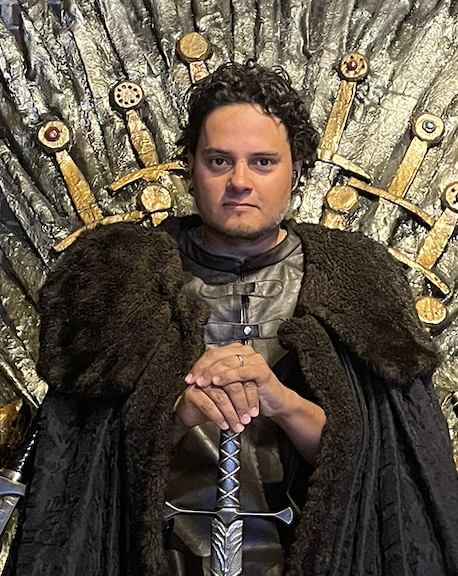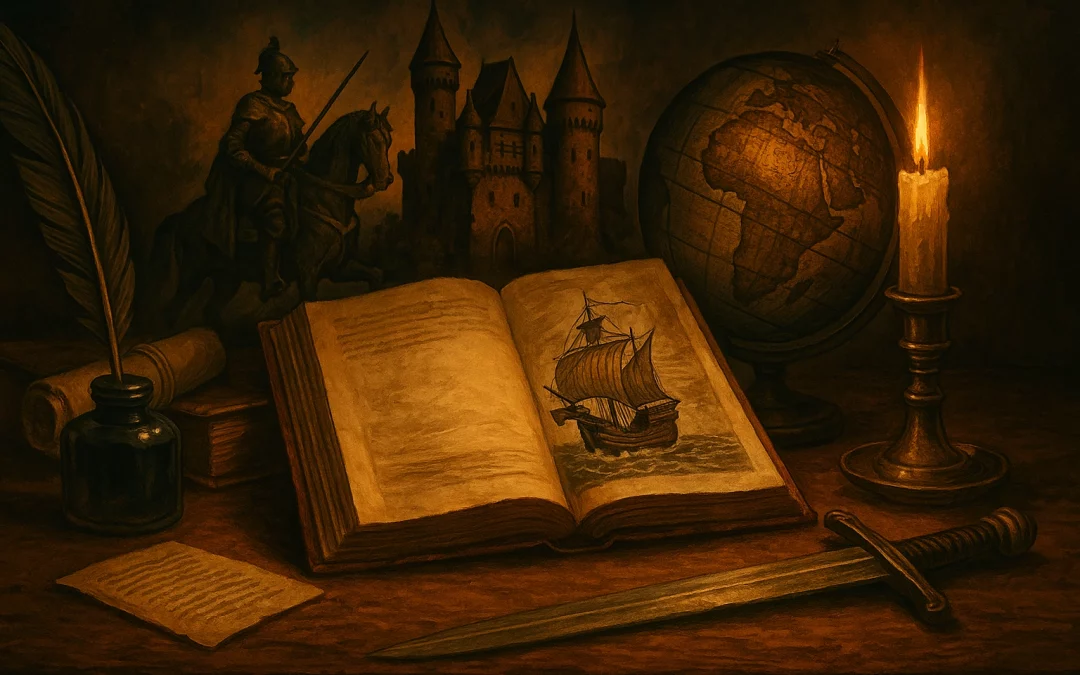What if you could walk the streets of Victorian London, sit at the court of Henry VIII, or march alongside Napoleon’s army, without leaving your chair? That’s the promise of historical fiction.
More than just stories set in the past, these novels let us step into other lives and times, weaving fact and imagination into a tapestry that feels both familiar and strange.
Historical fiction is one of the most vibrant genres today, winning literary prizes and topping bestseller lists.
Let’s unpack what it is, explore its subgenres, and look at some notable examples that show why it continues to capture readers’ imaginations.
What Is Historical Fiction?
Historical fiction is a genre where the plot unfolds in the past, often against the backdrop of real events and places. Everything from the setting and customs to characters’ speech is crafted to reflect a specific historical period.
Some definitions say the story should be set at least fifty years before the author’s own time, but the heart of the genre is its ability to transport readers to another era.
What makes historical fiction distinctive is the balance of research and imagination.
Authors ground their stories in real history (wars, revolutions, dynasties, or social shift) while filling the gaps with fictional characters or imagined private lives of historical figures.
The result is a narrative that feels authentic yet intimate, offering a human side of history that textbooks rarely capture.
Major Subgenres of Historical Fiction
Historical fiction is not a single shape but a sprawling family tree. Writers have blended the form with other genres, creating distinct subgenres that cater to different tastes:
Historical Romance
Love stories set against the constraints of their time. Think Margaret Mitchell’s Gone with the Wind or Diana Gabaldon’s Outlander. These novels pair passion with the drama of wars, revolutions, and shifting societies.
Historical Mystery/Thriller
Whodunits and conspiracies in bygone eras. Ellis Peters’ Cadfael Chronicles (a medieval monk turned sleuth) and Umberto Eco’s The Name of the Rose are classics. These combine period atmosphere with page-turning suspense.
Biographical Novels
Fictionalized accounts of real lives, such as Robert Graves’ I, Claudius or Hilary Mantel’s Wolf Hall. They allow readers to experience history through the eyes of kings, queens, and revolutionaries, imagining thoughts history books can’t record.
Alternate History
“What if?” scenarios that diverge from real events. Philip K. Dick’s The Man in the High Castle imagines a world where the Axis powers won World War II. These stories highlight how fragile the course of history can be.
Historical Fantasy
Adding magic or myth to real history. Susanna Clarke’s Jonathan Strange & Mr Norrell sets magicians loose in Napoleonic England, while Naomi Novik’s His Majesty’s Dragon reimagines the same era with aerial dragon warfare.
Beyond these, you’ll find family sagas, nautical adventures, and time-slip tales. The uniting thread is a commitment to immersing readers in another time, whether faithfully or with a twist.
Notable Works and Authors
The genre has a long lineage. Sir Walter Scott’s Waverley (1814) is often considered the first modern historical novel, and his Ivanhoe set the standard for medieval adventure.
In Russia, Tolstoy’s War and Peace married intimate family drama with sweeping national conflict. Alexandre Dumas thrilled readers with The Three Musketeers and Queen Margot, while James Fenimore Cooper painted early America in The Last of the Mohicans.
In the 20th century, writers pushed the boundaries further. Robert Graves’ I, Claudius reimagined Roman history through a wry first-person voice, while Margaret Mitchell’s Gone with the Wind became an enduring epic of the American South.
More recent decades brought high literary acclaim: Hilary Mantel’s Wolf Hall and its sequels twice won the Booker Prize for their penetrating portrayal of Thomas Cromwell.
On the global stage, Chimamanda Ngozi Adichie’s Half of a Yellow Sun and Gabriel García Márquez’s One Hundred Years of Solitude (a magical realism classic as well) showed how the form can illuminate histories beyond Europe and America.
These novels illustrate how historical fiction can be swashbuckling entertainment, searing social critique, or intimate character study, all while rooted in the past.
Why Historical Fiction Still Matters
Historical fiction is not stuck in the past, but it’s constantly evolving. Recent novels increasingly give voice to marginalized perspectives: women, enslaved people, colonized nations, and ordinary workers whose lives shaped history as much as kings and generals.
The genre has become more global, more diverse, and more experimental in form, using dual timelines, metafiction, or magical realism to rethink what history means.
Why does it endure? Because it speaks to our ongoing curiosity: what was it like to live back then? At its best, historical fiction doesn’t just reconstruct the past—it connects it to our present.
It shows that the struggles, hopes, and questions people faced centuries ago aren’t so different from our own. And sometimes, it warns us, like a Greek chorus, of mistakes we risk repeating.
Far from a niche corner of literature, historical fiction is now central to how we imagine and question history itself. It is time travel by story: an invitation to step into another world, to see through other eyes, and to return with a deeper understanding of both past and present.

D.P. Martinez is a contemporary fantasy author specialising in urban fantasy and magical realism. He holds an M.A. in English Literature from the University of Greenwich, where he focused on Literary London. His research explored metaphorical representations of London in urban fantasy. He has written hundreds of articles and several books across both fiction and non-fiction.

